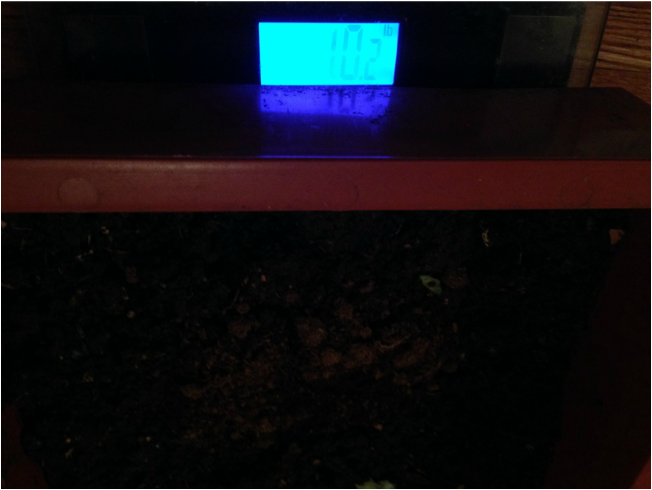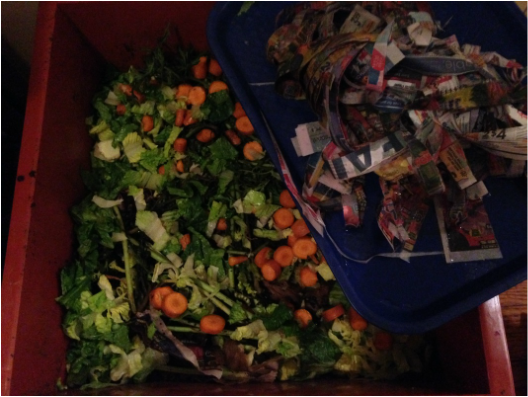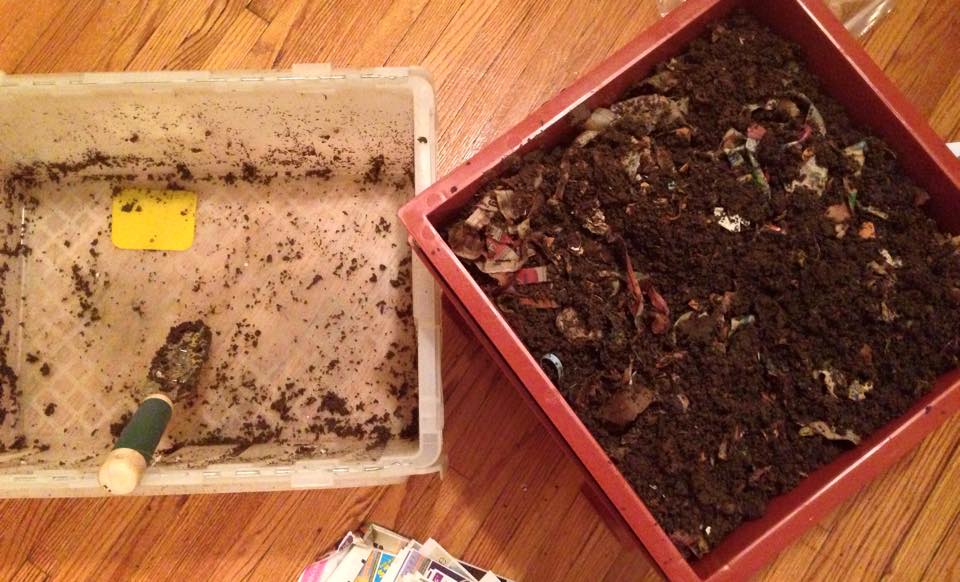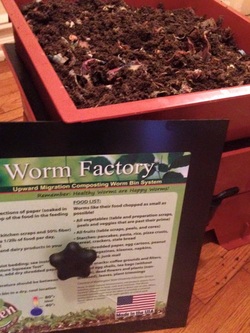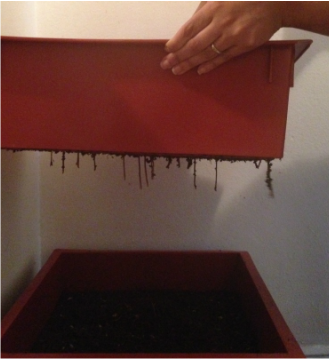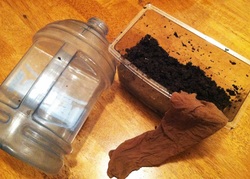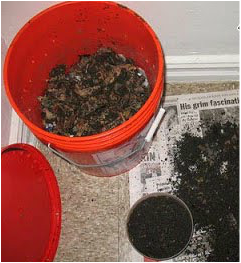| Its been over a year since the worms moved into their new home. Since then, our compost output has averaged 10-13 pounds every six to eight weeks. That's a lot of compost! In addition to mixing the compost into the soil of the plants growing at Kiddie Science headquarters, we've also given lots of it away to local friends and neighbors. We also make compost tea. It's amazing how this used to be garbage, and now its not! Now its dark, rich, crumbly, nutrient-rich compost. |
With indoor composting, it's highly recommended you avoid specific food items such as citrus, bananas, meat, and fish. Outside of that, we feed them food scraps, shredded newspaper, torn up junk mail, used coffee grounds, and more.
The items pictured below includes produce we never got around to eating in time, leftover vegetable scraps, junk mail, and last week's circulars to local grocery stores. Within two month's time, all of this will be nutritious compost.

